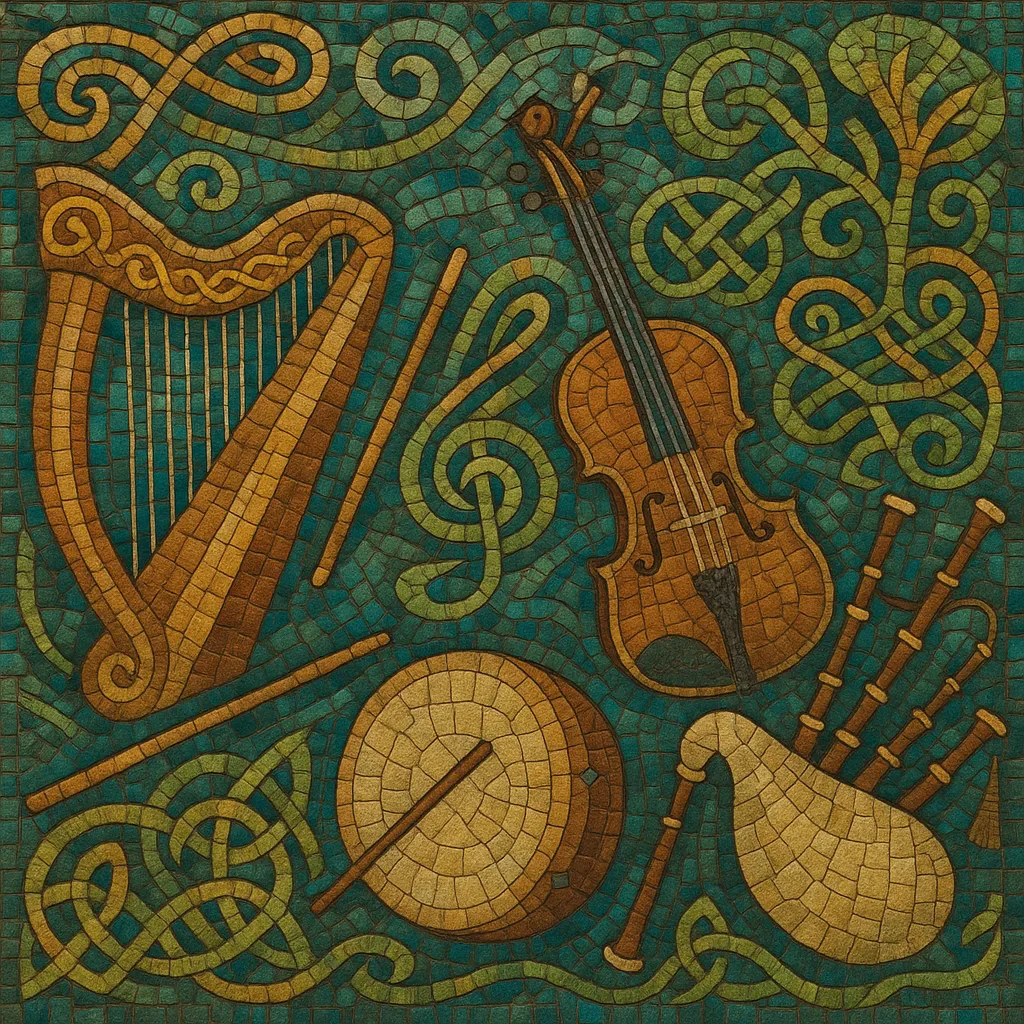Celtic is a broad, pan-regional umbrella for the traditional and tradition-inspired music of the Celtic nations—primarily Ireland and Scotland, but also Brittany (France), Wales, Galicia (Spain), the Isle of Man, and Cornwall.
It is characterized by modal melodies (often Dorian and Mixolydian), lilting dance rhythms (reels in 4/4, jigs in 6/8, slip jigs in 9/8, hornpipes with dotted swing), and extensive ornamentation (cuts, rolls, crans, grace notes). Typical instruments include fiddle, wooden flute, tin whistle, uilleann pipes or Great Highland bagpipes, button accordion/concertina, bodhrán, Celtic harp, bouzouki (adopted into Irish music), guitar, and occasionally piano.
Vocal traditions range from unaccompanied sean-nós singing to narrative ballads in English, Irish (Gaeilge), and Scottish Gaelic, as well as Breton and Welsh. Modern "Celtic" often denotes both heritage styles and contemporary hybrids that blend folk with pop, rock, and ambient/new age aesthetics while retaining core melodic modes, dance forms, and timbral signatures.
The musical roots of what is now called "Celtic" reach back centuries in Ireland, Scotland, Wales, and Brittany. Dance tunes (reels, jigs, hornpipes) evolved in rural social settings, while airs and ballads preserved local histories and languages. Unaccompanied vocal styles (such as Irish sean-nós) and bagpipe/harp repertories formed parallel art and folk traditions.
In the mid‑20th century, folk collectors and local sessions kept repertoires alive. The 1960s folk revival professionalized the music, with ensembles standardizing tune sets, harmony backing, and touring circuits. The term "Celtic music" gained currency in the 1960s–70s as artists, festivals, and labels linked Irish, Scottish, and Breton scenes under a shared brand, encouraging cross‑regional collaboration and repertoire exchange.
From the late 1970s onward, groups like The Chieftains and Breton harpist Alan Stivell brought the sound to global audiences. The 1980s–90s saw studio polish and ambient textures (Clannad, Enya) and the rise of high‑energy concert ensembles (Altan, Capercaillie). The genre seeded substyles—Celtic rock, Celtic punk, and Celtic new age—and influenced worldbeat and folk metal. Today, sessions, festivals, and digital archives sustain both heritage practices and innovative fusions, while language revival movements keep Gaelic and Breton song at the forefront.


